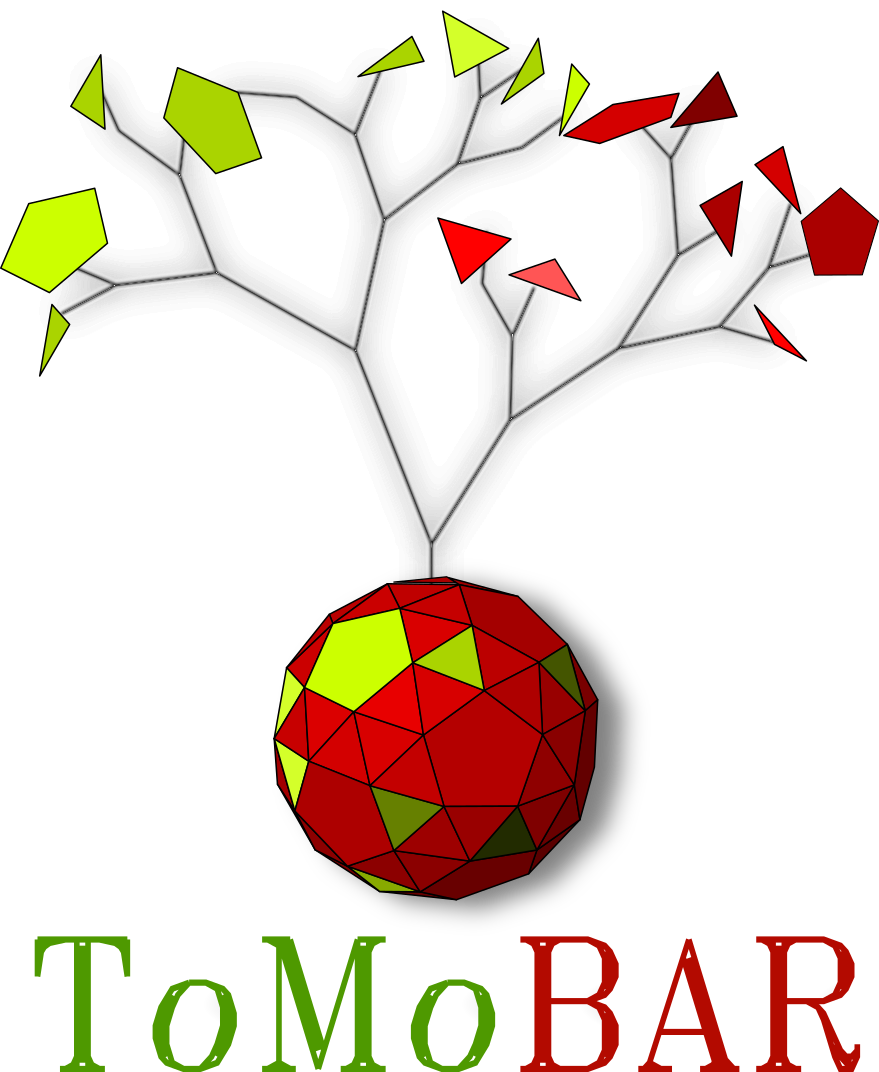Basic iterative reconstruction#
Note
Installing HTTomolibGPU provides access to a wide range of GPU-accelerated processing tools, in addition to reconstruction wrappers that leverage ToMoBAR’s modules, see point 6 in Dependencies.
We start by defining a 3D projection data Numpy array of unsigned integer 16-bit data type (optional)
and with axes labels given as ["detY", "angles", "detX"]. We also provide the corresponding flats and darks fields
(also 3D arrays of the same axes order).
The first step is to normalise
dataRawusing thenormaliserfunction fromtomobar.supp.suppTools.normaliser.
from tomobar.supp.suppTools import normaliser
data_norm = normaliser(dataRaw, flats, darks, log=True, method="mean", axis=1)
Instantiate the iterative reconstructor
tomobar.methodsIR:
from tomobar.methodsIR import RecToolsIR
detectorVert, angles_number, detectorHoriz = np.shape(data_norm)
Rectools = RecToolsIR(
DetectorsDimH=detectorHoriz, # Horizontal detector dimension
DetectorsDimH_pad=0, # Padding size of horizontal detector
DetectorsDimV=detectorVert, # Vertical detector dimension
CenterRotOffset=0.0, # Center of Rotation (needs to be found)
AnglesVec=angles_rad, # A vector of projection angles in radians
ObjSize=detectorHoriz, # The reconstructed object dimensions
datafidelity="LS", # Least-Squares data fidelity for basic methods
device_projector="gpu", # Device to perform reconstruction on
)
- Now we have an access to all methods of this particular reconstructor.
The basic iterative algorithms are wrapped directly from ASTRA-Toolbox, with an exception of CuPy-enabled ones. Let us use SIRT and CGLS reconstruction algorithms.
Please note that the dictionaries needed for all iterative methods with exact keyword arguments defined in
tomobar.supp.dicts.
_data_ = {
"projection_norm_data": data_norm,
"data_axes_labels_order": ["detY", "angles", "detX"],
} # data dictionary
_algorithm_ = {"iterations": 300, "nonnegativity": True} # algorithm dict
SIRT_Rec = Rectools.SIRT(_data_, _algorithm_)
CGLS_Rec = Rectools.CGLS(_data_, _algorithm_)
One can also operate purely on CuPy arrays if Dependencies are satisfied for the CuPy package.
For that one needs to use tomobar.methodsIR_CuPy class instead of tomobar.methodsIR. Note that the array of angles for the CuPy modules should be provided as a Numpy array.
